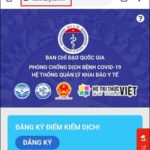For the Moc Chau community, Nam Pia is considered a real delicacy, especially during the cold days. Let’s delve into this unique dish and explore its origins, preparation, and how it’s enjoyed.
1 What is Nam Pia?
 What is Nam Pia?
What is Nam Pia?
Nam Pia is a traditional dish of the Thai ethnic group in Vietnam. The term “nam” in Thai means “water,” while “pia” refers to the semi-solid substance found in the small intestine of animals such as water buffalo, cattle, or goats.
This substance is essentially digestive fluid or “chyle”, which is partially digested fat and other food particles from the animal’s small intestine. In Chinese, this dish is known as “Ngau Sat Piet”, with “ngau” meaning “cow” and “sat piet” being a transliteration of the dish’s name in Thai.
The preparation of Nam Pia is similar to that of pork offal soup. The chyle is extracted and seasoned to taste, and it is often combined with a variety of other offal from herbivorous animals, including blood, intestines, stomach, heart, liver, and lungs, creating a hearty stew.
The Production and Processing of Nam Pia
 The Production and Processing of Nam Pia
The Production and Processing of Nam Pia
The production process for Nam Pia is quite meticulous. The cattle used for this dish are fed a diet of fresh grass and traditional Chinese medicine ingredients for an extended period before processing. This diet is believed to impart valuable medicinal properties to the chyle formed in the animal’s stomach and small intestine.
While the dish may be unappetizing to some, it is believed to have digestive and cooling properties and is considered beneficial for the stomach.
Ingredients of Nam Pia
 How to Enjoy Nam Pia
How to Enjoy Nam Pia
The key ingredients of Nam Pia include cow’s blood, tail, meat, silver navel, intestines, liver, cartilage, and lungs. The most crucial component is the chyle from the small intestine, or “pia”. During preparation, the best section of the small intestine is chosen, and the “pia” is carefully extracted and seasoned.
2 How to Enjoy Nam Pia
 How to Enjoy Nam Pia
How to Enjoy Nam Pia
While the ingredients of Nam Pia may be off-putting to some, this dish offers a unique blend of flavors and textures. It is particularly beneficial for those with weak digestion and is surprisingly easy to digest despite its rich ingredients. Those who acquire a taste for it often find themselves craving more.
Nam Pia is typically served in bowls or cups and enjoyed while hot. It is commonly accompanied by bitter vegetables and leaves, which help balance the rich flavors. At first taste, the dish may seem challenging due to the combination of bitter leaves and the unique texture of the “pia”, but it leaves a pleasantly sweet and fatty aftertaste.
We hope this article provided you with insightful information about Nam Pia, an intriguing delicacy from the Moc Chau community. Now you know what it is and how to enjoy it to the fullest!
Explore 12 Amazing Destinations for Biking Trips
Unlock Vietnam in a brand new way with an exciting biking tour! Discover the stunning beauty of the country with Dien May XANH’s top 12 must-see destinations. From sweeping plains to clear blue beaches and mountainous vistas – experience all the sights with your own personal cycling tour. Find your ideal route and set out for an adventure today!
Exploring the Natural Wonders of Vinh Long: Rivers, Gardens, and Charming Landscapes
Discover the breathtaking beauty of Vinh Long in the Mekong Delta with Dien May XANH as your guide! From lush green fields to interlacing canals and rivers, take part in a journey to explore the top famous check-in places while traveling to this potential tourist destination.






































